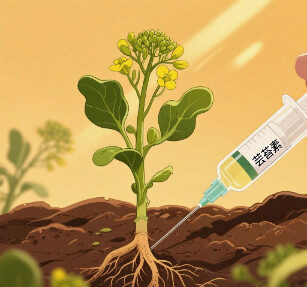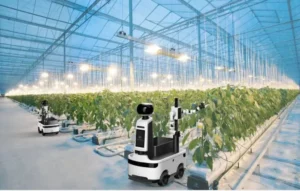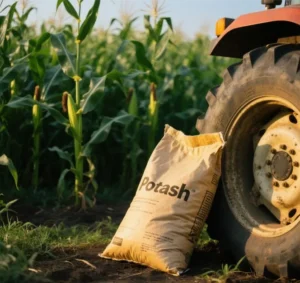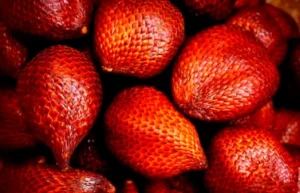Plants rely on a delicate hormonal balance to thrive in dynamic environments. Classical plant hormones, such as auxins, gibberellins, and cytochrome B, have long been used to improve agriculture. A more recent finding, brassinosteroids (BRs), is now transforming crop management. Recognized by the Food and Agriculture Organization (FAO) and the International Society of Plant Physiologists as the sixth major class of plant hormones, BRs—especially the highly bioactive 28-homobrassinolide (28-HBL)—provide multifaceted solutions to enhance productivity, resilience, and sustainability in farming.
A Holistic Approach: Beyond Traditional Plant Growth Regulators
Unlike single-function PGRs, BRs modulate multiple physiological processes, acting as master regulators. They promote cell division and elongation, optimize photosynthesis, and fortify defenses against stressors such as drought, salinity, cold, and pests. This unique ability to balance hormonal pathways sets BRs apart. For instance, auxins such as IAA stimulate root growth but can hinder shoot development at high concentrations. However, BRs work together with auxins to encourage balanced growth without negative consequences. Similarly, while gibberellins induce stem elongation but thin fruit skin, BRs mitigate these drawbacks by strengthening cell walls.
| Hormone Class | Key Functions | Agricultural Uses | Limitations |
| Auxins (e.g., IAA, NAA, 2,4-D) | Promote root initiation, prevent fruit drop | Rooting agents, fruit thinning | High concentrations inhibit growth |
| Gibberellins (GA₃, GA₄+₇) | Stimulate stem elongation, break dormancy | Bolting control, fruit enlargement | Overuse thins fruit skin, dilutes sugars |
| Cytokinins (e.g., 6-BA, CPPU) | Enhance cell division, delay senescence | Tissue culture, fruit setting | May cause malformed fruits |
| Ethylene (e.g., ethephon) | Ripening, abscission | Fruit maturation, flower induction | Shortens shelf life; phytotoxic |
| Abscisic Acid (ABA) | Stress response, dormancy | Drought resistance, seed priming | Growth suppression at high doses |
| Brassinosteroids (28-HBL) | Balances all above hormones | Growth promotion + stress mitigation | None at recommended doses |
Key Functions and Agricultural Advantages
- Growth Promotion and Yield Maximization: BRs increase the expression of expansin genes, enlarging fruit size (e.g., grapes and tomatoes) and boosting chlorophyll production by 15–30%. This leads to increased sugar accumulation. BRs reduce flower and fruit drop by modulating auxin-ethylene ratios to ensure better retention. For instance, Li et al. (2020) reported a 20% increase in tomato yield following BR treatment due to enhanced expansin gene expression.
- Stress Mitigation: BRs activate antioxidant enzymes (SOD and CAT) to neutralize reactive oxygen species (ROS) during periods of drought or salinity stress. BRs also promote the accumulation of proline and soluble sugars in cells to protect crops from cold and frost damage. Remarkably, BRs accelerate recovery from herbicide injuries, such as exposure to glyphosate. Wang et al. (2019) found that plants treated with BRs experienced 40% less glyphosate-induced damage than untreated plants.
- Quality Enhancement: Postharvest applications extend shelf life by reducing ethylene sensitivity. In fruits such as apples and berries, BRs stimulate anthocyanin synthesis, thereby enhancing color and nutritional value. Zhang et al. (2018) found that apples treated with BRs retained their color and freshness for up to 30 days post-harvest.
Practical Application Strategies
Effective implementation hinges on precision.
- Dosage and timing: Apply 5–10 g/ha of 28-HBL (diluted 1500 times in 15 liters of water) across two to three spray cycles during the pre-flowering, fruit set, and ripening stages.
- Compatibility: BRs mix synergistically with non-alkaline pesticides (e.g., chlorpyrifos) and fungicides, optimizing pest management.
- Crop-Specific Benefits: Cereals experience a 20% increase in tillering and reduced lodging, while citrus and apples achieve a 15-25% boost in yield with +2° Brix. Tomatoes and cucumbers exhibit a 30% reduction in blossom-end rot.
Innovative Synergies: Future-Proofing Crops
The potential of brassinosteroids (BRs) is significantly enhanced when they are combined strategically with other plant hormones. This combination revolutionizes agricultural practices and offers distinct advantages.
- BRs + Cytokinins (CPPU): In watermelons and kiwifruit, CPPU enlarges cells, increasing fruit size, while BRs optimize nutrient allocation, enhancing sweetness. This combination improves both yield and fruit quality, making the produce highly marketable.
- BRs + gibberellins (GA₃): In mangoes and lychees, GA₃ stimulates flowering, ensuring a higher number of fruits. BRs minimize fruit drop, doubling productivity. This synergy is crucial in regions with challenging climatic conditions, ensuring stable harvests.
- BRs + ethephon: In corn, ethephon shortens stalks, preventing lodging and enabling easier mechanical harvesting. Meanwhile, BRs fortify stems against adverse weather. This combination ensures resilience and higher yields in diverse environmental conditions.
These combinations are significant for the future of agriculture because they improve crop resistance to environmental stress, increase productivity, and enhance product quality. This addresses the growing global demand for sustainable and efficient food production.
Sustainability and Regulatory Compliance
BRs align with global green development policies. As residue-free compounds, they meet the eco-friendly agricultural standards of the EU and China. Future advancements include nano-encapsulated BRs for slow-release delivery and CRISPR-edited crops with enhanced BR biosynthesis pathways, which could reduce the need for external inputs.
Conclusion
BRs represent a paradigm shift in modern agriculture. By replacing multiple plant growth regulators with a single, low-dose input that is benign to the environment, BRs simultaneously boost yields, fortify crops against climate extremes, and improve fruit quality. As research progresses, brassinosteroids, particularly 28-HBL, are emerging as a cornerstone for sustainable food systems. They provide farmers with a practical tool to help them overcome the challenges of feeding a growing population in an unpredictable world.









